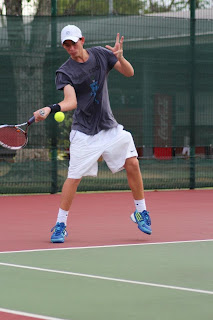LEARNING TO HALF VOLLEY DEEP BALLS ON THE BASELINE

Deep balls are unavoidable so better to learn how to handle them when they come DESCRIPTION: For some, perhaps one of the most difficult ground-strokes is the deep ball that lands on or near the baseline. Martina Hingis was very good at taking the ball off the bounce, often choosing to stand her ground on deep balls and return the ball with excellent timing. I asked her once how she learnt to hit this type of ball so well. She told me that as a youngster her mother would sprinkle objects just behind the baseline, making it almost impossible to step back for deep balls. This had developed her ability to coordinate this very difficult ball. THE DRILL If you are having trouble with balls that land deep and that give you little time to move back, try a similar drill to the one that helped Martina Hingis. I’m sure you spend a lot of time hitting from the baseline during practice. Next time you practice, spend some of your baseline practice keeping your feet





